Zander are one of the newer species on the UK anglers’ quarry list and one that still has a lot of nonsense and drivel written about them, possibly more so than any of our other fish species.
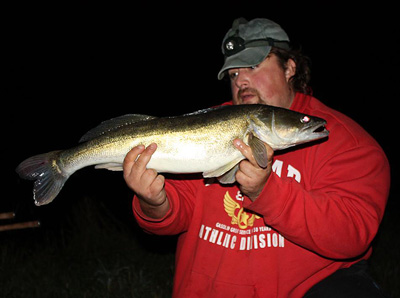 The reason for this is that, relatively speaking, there are very few zander experts – and by that I mean anglers who have fished for zander through rain and shine and on a wide variety of venues and with a variety of methods. There are, however, an awful lot of angling writers and a lot of them have dabbled here and there; the ‘there’ often being at Old Bury Hill (OBH), the Surrey stillwater venue that seems to dominate the angling media when it comes to the species, probably because it’s easy and predictable to catch there, and it doesn’t require the same amount of effort to catch there as it does for wild zander on wilder waters.
The reason for this is that, relatively speaking, there are very few zander experts – and by that I mean anglers who have fished for zander through rain and shine and on a wide variety of venues and with a variety of methods. There are, however, an awful lot of angling writers and a lot of them have dabbled here and there; the ‘there’ often being at Old Bury Hill (OBH), the Surrey stillwater venue that seems to dominate the angling media when it comes to the species, probably because it’s easy and predictable to catch there, and it doesn’t require the same amount of effort to catch there as it does for wild zander on wilder waters.
I first started fishing for zeds way back in the eighties when the fish were probably the most vilified and hated species that has ever graced our waterways. Routinely the fish were thrown up the bank by ignorant anglers fuelled by an even more ignorant press and water authority.
The problem was that historically zander were never supposed to go anywhere other than the Great Ouse Relief Channel into which they were first stocked by the then Ouse River Board as 97 fingerlings back in 1963. However, as most predicted at the time, the zander soon escaped into the tidal Great Ouse and from there to the main river and once they reached there the whole of Fenland was their playground.
Unfortunately at the same time the zander were colonising the Fens so the Fens were having problems, caused, in main, by the mismanagement of the pumping of water through the Relief Channel and the tidal section of the Ouse. However rather than hold their hands up the Water Authority had a readymade scapegoat in the shape of this alien interloper that they themselves had introduced!
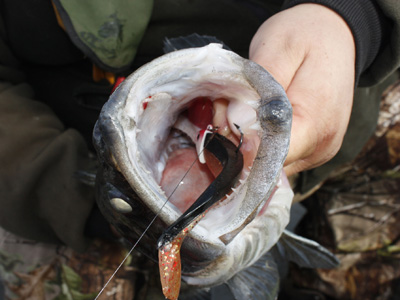 Now I am not going to try and convince you that zander were completely blameless, however their impact was greatly overplayed with such tales as zander ‘killing for the sake of killing’ or eating everything before them. Obviously none of this was true as has since been seen by the balancing that took place once the zander were left alone.
Now I am not going to try and convince you that zander were completely blameless, however their impact was greatly overplayed with such tales as zander ‘killing for the sake of killing’ or eating everything before them. Obviously none of this was true as has since been seen by the balancing that took place once the zander were left alone.
These days the Fens are as full of small fish as most anglers can remember and yet the zander are still there. In fact next year marks the fiftieth anniversary of zander being introduced into the Fens and these days it’s probably as hard to catch a zander as it has ever been – after all well fed fish are not the easiest fish to catch? But that said there are catchable so let’s take a look at how we can get to grips with your first ever zander.
Let’s start with the tackle that you will need and here is where an awful lot of guff is often written by the occasional zander angler as they often state that a barbel rod is more than adequate for zander fishing. Well there is a small element of truth there in so much as a barbel rod will land any zander that you are ever likely to catch, just so long as you don’t want to cast more than twenty or thirty yards. Now that may be okay on waters such as OBH or the smaller drains, but when the wind is blowing and the current pulling on such waters as the Ouse, Severn or Relief Channel, then a barbel rod is about as much use as PVA trebles!
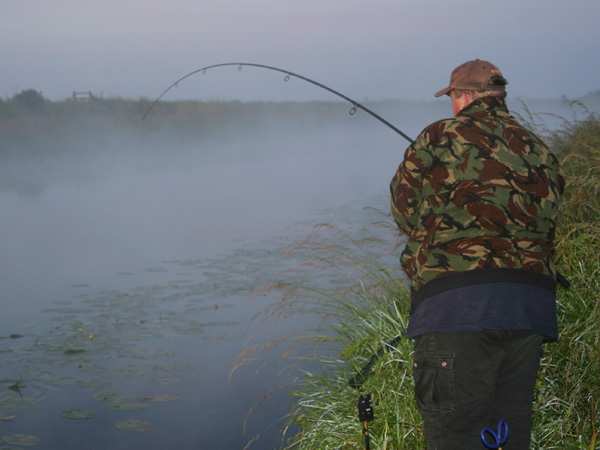
On waters such as this, when you could be loaded up with 6oz or more in the combination of bait and lead, you need a pike rod to hit the spots that you might need to. Personally I have always used a pike rod in the 2.5 to 2.75lb test curve range, preferring ‘proper’ pike rods to carp rods as the pike rods are better equipped to cast heavy baits to distance and they have softer tip sections to absorb the lunges of a zander close in. For that reason I personally prefer mono to braid too, as braid, due to its inherent lack of stretch, does tend to give you a few traumatic moments close in. Mono would usually be in the 15lb breaking strain region just in case a pike should come sniffing around, especially in the summer when they are fighting fit.
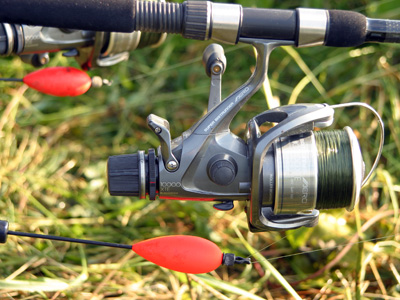 My mono is loaded onto a Shimano 10000 XTE-RA reel. I have flirted with other manufacturers’ reels and whilst they are usually more than adequate there are very few that can touch Shimano on build quality, reliability or after sales service. You don’t necessarily need a reel this size, but I find the slightly bigger Shinny’s have a bit more cranking power which comes in handy in warm weather when I like to land zander as fast as possible to avoid over stressing them.
My mono is loaded onto a Shimano 10000 XTE-RA reel. I have flirted with other manufacturers’ reels and whilst they are usually more than adequate there are very few that can touch Shimano on build quality, reliability or after sales service. You don’t necessarily need a reel this size, but I find the slightly bigger Shinny’s have a bit more cranking power which comes in handy in warm weather when I like to land zander as fast as possible to avoid over stressing them.
Terminal tackle is another subject of debate amongst the occasional zander angler and the regular. Most occasional anglers will tell you that single hooks and braided hooklengths will catch you more zander. Let me state here and now for the record that this is complete and utter nonsense. A zander’s mouth is nothing but teeth and bone. The very idea that it is sensitive enough to tell the difference between wire and braid is ludicrous, because if that was so it would find chomping down on any fish that has spines, or is bony, pure agony and of course they do not. Furthermore, if you use braided hooklengths with livebaits they are extremely prone to getting tangled and they will get bitten off by pike. Maybe not on every occasion but eventually they will and we should try wherever possible to avoid leaving hooks in fish.
Moving onto hooks I would also say here that the ‘occasional angler’ very often leads their readers up the garden path. Singles are useable, but in my opinion they cause far too many missed runs; not only because they can be outside the fish’s mouth, but also because they have a tendency to turn over and get masked by the bait. To me the best bet has, and always will be, a set of trebles, usually a tandem set.
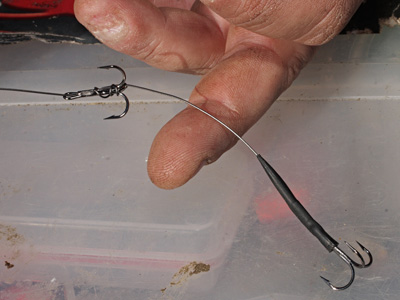 Now I know a lot of anglers dislike them but in my experience there is nothing better at finding a seat in a zander’s bony mouth than trebles but ultimately the choice is a personal one. If you are only ever intending to use tiny baits as many advocate (a massive mistake) then single hooks are passable, however I regularly use baits in the 6-10oz range and single hooks with these are worse than useless.
Now I know a lot of anglers dislike them but in my experience there is nothing better at finding a seat in a zander’s bony mouth than trebles but ultimately the choice is a personal one. If you are only ever intending to use tiny baits as many advocate (a massive mistake) then single hooks are passable, however I regularly use baits in the 6-10oz range and single hooks with these are worse than useless.
One final point with the use of single hooks is that a zander’s internal organs are located just behind its throat and if you use very big single hooks and are unfortunate enough to deep hook one then that big single stands every possibility of puncturing the zander’s heart or liver and the result of that will always be fatal.
Moving on from the rod, reel, line and hooks you will also need a reliable bite indication system, be that a front alarm coupled with a bobbin or drop arm or a pike drop off indicator, a good head torch, forceps, a big landing net, unhooking mat, scales and a sling, plus of course spare terminal gear. Basically everything that you need should fit in a small rucksack and, along with a quiver and chair, that is all you will ever need to carry with you unless of course you are going to do nights, but chances are that most anglers will already have their own night gear anyway.
So that’s the tackle sorted, next time I shall look at the terminal rigs I use for zandering and talk a bit about bait, how to store it and what, how and when to use the different types.
See you then.











